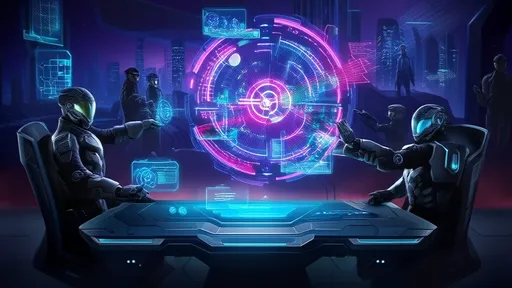The world of gaming has long been dominated by visual and auditory experiences, leaving players with visual impairments on the sidelines. However, a groundbreaking innovation is changing the landscape: braille-based video games powered by tactile screen technology. This advancement is not just a step forward in accessibility—it’s a leap toward redefining how games can be experienced through touch.
For decades, the gaming industry has largely overlooked the needs of blind or visually impaired players. While audio-based games have made some inroads, they often lack the depth and interactivity of mainstream titles. Enter tactile screens capable of rendering braille and dynamic textures in real time. These screens use microfluidic or piezoelectric mechanisms to create raised patterns that can be felt with the fingertips, allowing players to "see" the game world through touch.
The technology behind these tactile displays is nothing short of revolutionary. Unlike static braille readers, which display text one line at a time, these screens can generate dynamic, interactive surfaces. Imagine navigating a dungeon by feeling the walls or identifying enemies through distinct textures on the screen. Developers are now designing games where terrain, obstacles, and even characters are represented by unique tactile signatures, creating a fully immersive experience.
One of the most promising aspects of this innovation is its potential to foster inclusivity without sacrificing gameplay complexity. Traditional accessibility features often simplify games, but braille-enabled titles can retain strategic depth. Puzzle games, for instance, can use varying dot patterns to represent different mechanisms, while adventure games might encode environmental clues into tactile feedback. This opens doors for blind players to enjoy genres previously considered off-limits.
The social impact extends beyond entertainment. These games are proving to be powerful tools for braille literacy, particularly among younger users. Early studies suggest that interactive tactile gaming increases engagement with braille compared to traditional learning methods. As players naturally memorize dot patterns to progress in games, they’re simultaneously strengthening their reading skills—a compelling case for gamified education.
Of course, challenges remain. Current tactile screens face limitations in resolution and refresh rates, restricting how quickly in-game textures can change. There’s also the hurdle of cost; cutting-edge haptic displays remain prohibitively expensive for many consumers. However, with tech giants now investing in the field, these barriers are expected to lower within the next five years.
What makes this moment particularly exciting is the creative collaboration between blind gamers and developers. Pioneering studios are actively involving visually impaired testers in the design process, leading to innovations that sighted developers might never conceive. From rhythm games that use vibration sequences to racing games where track boundaries are felt through friction variations, these co-created experiences are pushing the boundaries of tactile gameplay.
The rise of braille gaming also prompts a broader conversation about accessibility in tech. As tactile screens improve, their applications could extend far beyond gaming—into education, workplace tools, and public interfaces. The video game industry, often an early adopter of new technologies, might just be pioneering the next universal interface standard.
Looking ahead, the convergence of braille displays with emerging technologies like AI and VR suggests even more possibilities. Experimental projects are already exploring how tactile feedback could work in virtual spaces, potentially allowing blind users to "feel" digital objects. While still in its infancy, this fusion could eventually give rise to fully accessible metaverse environments.
For now, the mere existence of braille video games represents a significant cultural shift. It challenges the notion that gaming must be a visual medium and proves that with the right technology, play can truly become universal. As these tactile games move from niche prototypes to mainstream platforms, they carry with them the promise of a more inclusive digital future—one where the joy of gaming knows no physical boundaries.

By /Jul 3, 2025

By /Jul 3, 2025

By /Jul 3, 2025

By /Jul 3, 2025

By /Jul 3, 2025

By /Jul 3, 2025

By /Jul 3, 2025

By /Jul 3, 2025

By /Jul 3, 2025

By /Jul 3, 2025

By /Jul 3, 2025

By /Jul 3, 2025

By /Jul 3, 2025

By /Jul 3, 2025

By /Jul 3, 2025

By /Jul 3, 2025

By /Jul 3, 2025

By /Jul 3, 2025